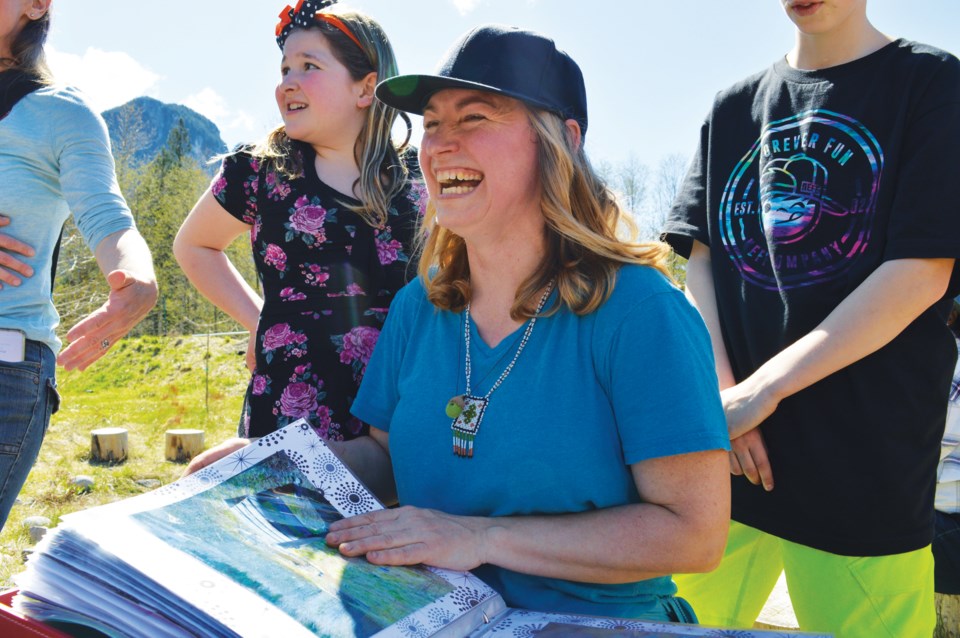All of Valleycliffe Elementary School poured out in the bright sun on Friday afternoon to attend what Rhonda O’Grady thought was an Earth Day assembly. It wasn’t.
Staff and students stood on the 2.5-acre wetland to honour the visionary volunteer.
Her husband, Steve, instigated the surprise by contacting the Parent Advisory Committee and The Squamish Watershed Society to show appreciation for the thousands of hours his wife contributed to creating the outdoor classroom, saying, “she does so much.”
Tears filled her eyes as she realized she was the centre of attention. O’Grady single-handedly executed her dream wetland project with the sole purpose of educating children, getting over $100,000 in grants and donations to keep it running.
Heather Feeney, chair of the PAC, gifted a scrapbook filled with photos, messages and drawings from every child in the school, as well as impacted families and previous students saying, “students will remember this for years to come.”
O’Grady also received a plaque and aerial photo of the wetland.
Then, the Grade 3 class huddled around a boombox to sing their rendition of “Help me Rhonda,” with the words replaced with “Thank you.” Steve presented her with a driftwood bench – something she had wanted for years.
Edith Tobe, president of the Squamish Watershed Society, says she is blown away by O’Grady’s enthusiasm. “She’s got the expertise, the passion and with two young boys in the school system, she imparts so much knowledge.”
The society provides 100 per cent of the funding for the program that teaches hundreds of students a year, relying heavily on volunteers.
“This is hopefully a model by which other schools can develop their own programs,” Tobe explains.
For a child, all it takes is one little tree or garden to be inspired and have nostalgic memories forever, O’Grady says.
In 2013, she began restoring the wetland after noticing the area behind the school was vacant. Bringing in a specialist from Kentucky, they laid out protective measures for the shallow space to hold water to provide habitat for amphibians. All the work is done by the kids and the community.
“The first thing we lose with development is the wetlands,” O’Grady explains.
Since its inception, children have planted around 2,000 native plants with a pollinator enhancement project with five raised flower beds, an insect hotel, vegetable gardens, a nature loom, a bird feeding station, a pumpkin patch, mason bee cocoons and a new bat-house. O’Grady crafted near 30 tree stumps as chairs to learn outdoors.
Other schools in the district tour the living classroom for field trips. Once teachers use the space, she says they too get the “lovesickness for nature.”
“If a couple of generations can go through the living classroom, it gives me hope for the future of our planet,” O’Grady notes.
“I’m a humanitarian not an environmentalist. What’s more important than clean air and nature? I can’t think of anything.”



